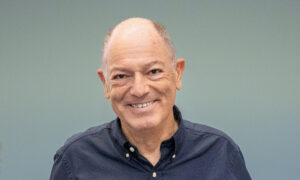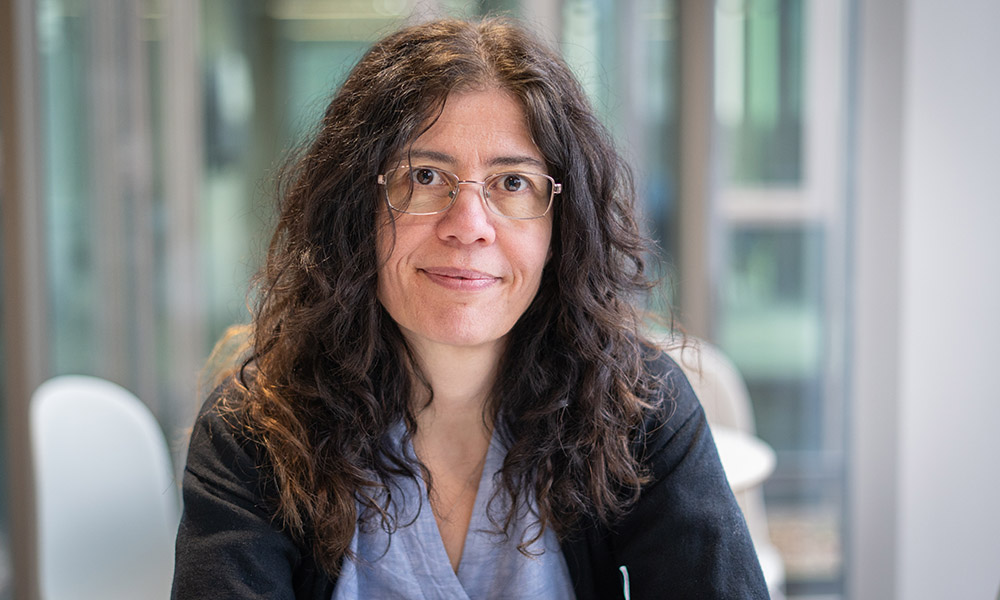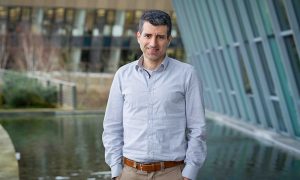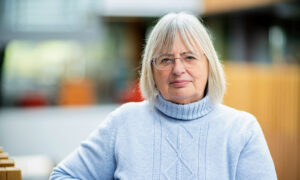
We are EMBL: Aybuke Kupcu Yoldas on trading stars for cells
Aybuke Kupcu Yoldas, BioImage Archive Data Project Leader at EMBL-EBI, talks about her journey from astrophysics to biology

Aybuke Kupcu Yoldas is a BioImage Archive Data Project Leader at EMBL-EBI. She was one of the first team members for the BioImage Archive (BIA), EMBL-EBI’s public repository for biological images from all modalities and scales.
We caught up with Aybuke to find out what made her trade stars for cells and how she and her colleagues are laying the foundations for open sharing of biological images.
Tell me a little bit about your background.
I’m originally from Turkey, and I studied physics, specifically astrophysics and astronomy. I did a PhD in Germany focusing on gamma-ray bursts, the brightest and most powerful class of explosions in the universe. I worked at the European Southern Observatory, supporting planning and simulations for the Extremely Large Telescope (ELT), a complex project as it will be the largest telescope on earth when finished.
After that, I did another postdoc at the University of Cambridge’s Institute of Astronomy. That’s where I had my first contact with biological images, during a Cancer Grand Challenges project for which I provided data management and image analysis services. During this time, I discovered EMBL-EBI.
When I pivoted from astrophysics to biology, it took a while to adapt. During the first months, I kept referring to “telescopes” instead of “microscopes”, which my colleagues found very amusing.
What does your current role focus on?
As a Data Project Leader, I support the development of EMBL-EBI’s BioImage Archive, the public repository for biological images from all modalities and scales.
When I started, I was only the fourth member of the team, so my role included training users, data curation, helpdesk duties, as well as back-end and website development. As the team grew, I took on more coordinating responsibilities. For example, I helped manage the project to introduce galleries as a new functionality in the BioImage Archive.
What are you currently working on?
We’ve been working on a lot of really exciting projects, and the common themes are making bioimaging data more easily accessible to all and cross-linking them with other data types, including, for example, spatial transcriptomics.
Spatial transcriptomics is a cutting-edge technology that allows researchers to analyse gene expression, meaning which genes are active at a specific location in a tissue. For example, in a cancer tumour sample, spatial transcriptomics can reveal which genes are active in cancer cells versus surrounding healthy tissue or immune cells. It’s truly fascinating! There are two kinds of spatial transcriptomics data: sequence-based and image-based.
At the moment, there’s no one widely-used data repository for spatial transcriptomics, so at EMBL-EBI we’re looking at how we could support researchers working with this exciting new data type.
What do you enjoy most about working at EMBL-EBI?
I love working with our user communities and knowing that what we do has an impact, because we maintain services that are so widely needed and highly regarded.
For me, EMBL-EBI is a very special place, because it’s so international and focused on making high-quality biological data available to the world.
I also love that my colleagues come from fascinating, multidisciplinary backgrounds. The institute offers a visa exemption, which means it’s able to recruit from anywhere in the world, which I think is extremely beneficial.
Do you have any unusual hobbies or interests?
I wish! I have two kids and two cats, so I spend most of my time looking after them. In my previous life, I also did a Master’s in Philosophy in Turkey, focusing on what was then called ‘strong AI’ but is now known as artificial general intelligence. I ended up writing my thesis on free will.
When I do have some precious free time, I love watching films. I watch the usual nerdy stuff, like sci-fi and animation, plus Korean rom-coms, which are very addictive! My family’s favourite film – and one of the best films ever – is Paddington 2.


